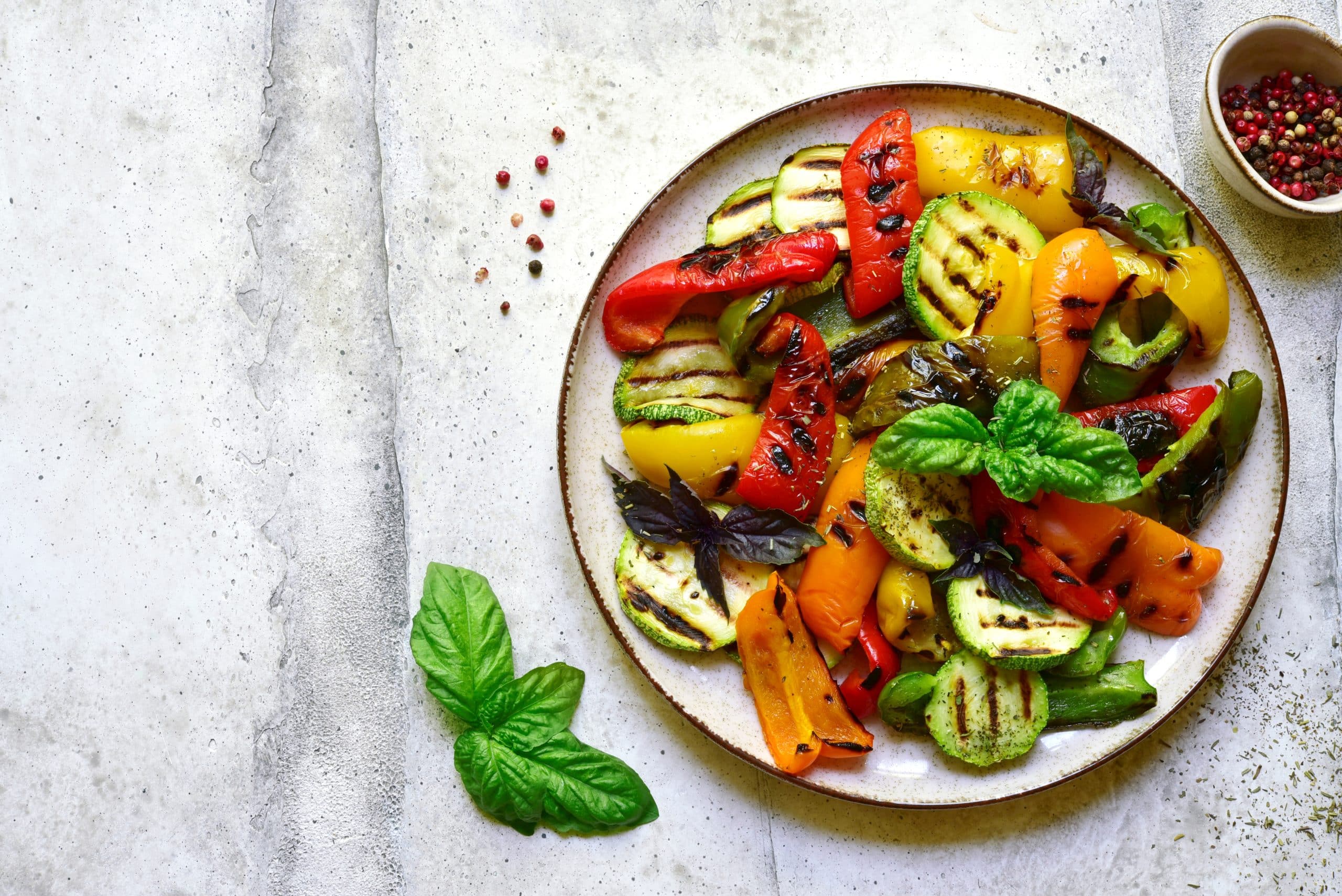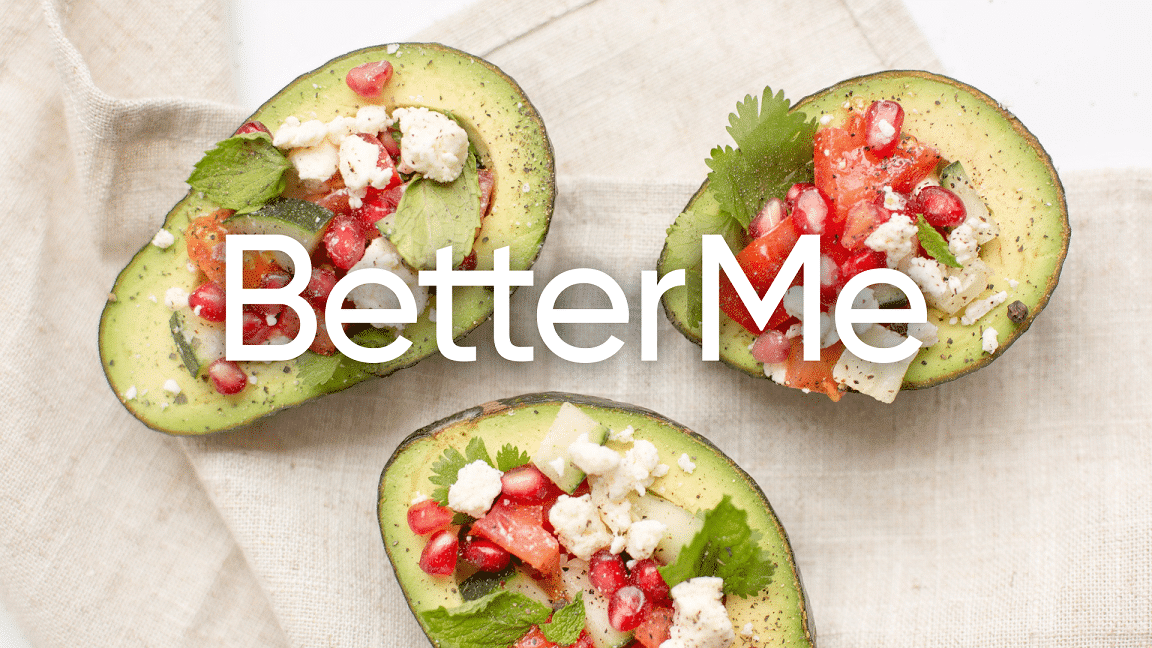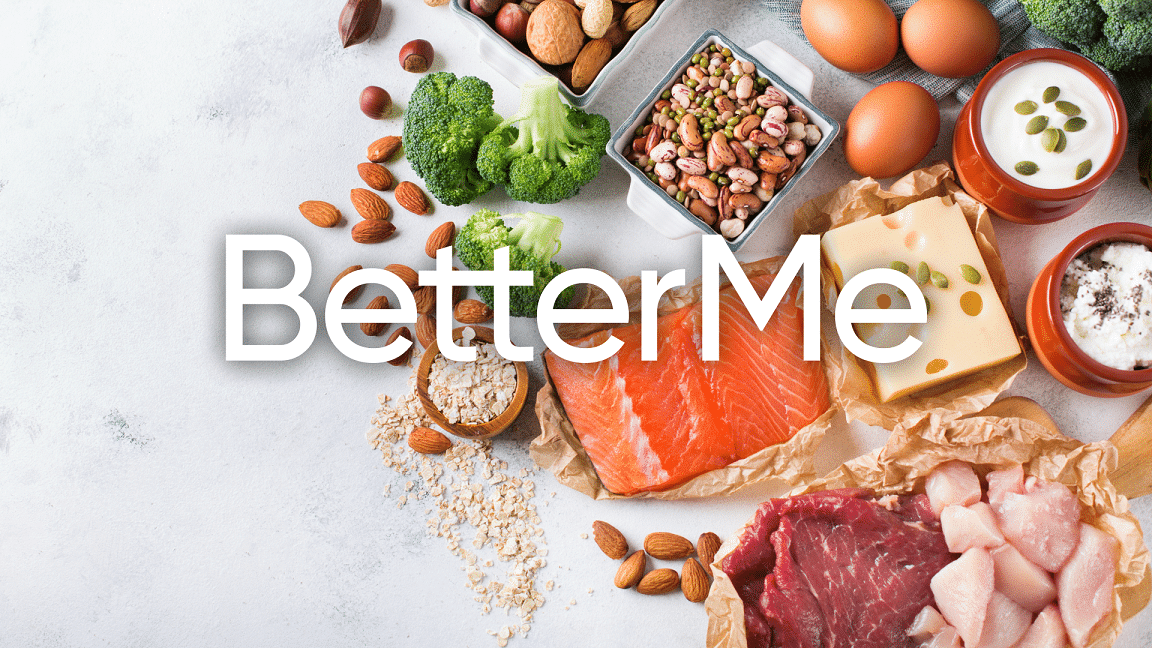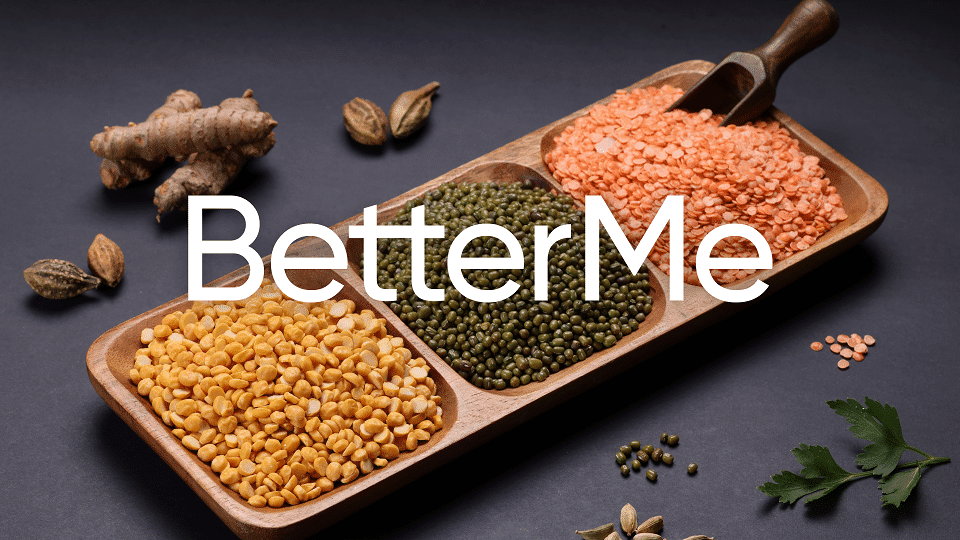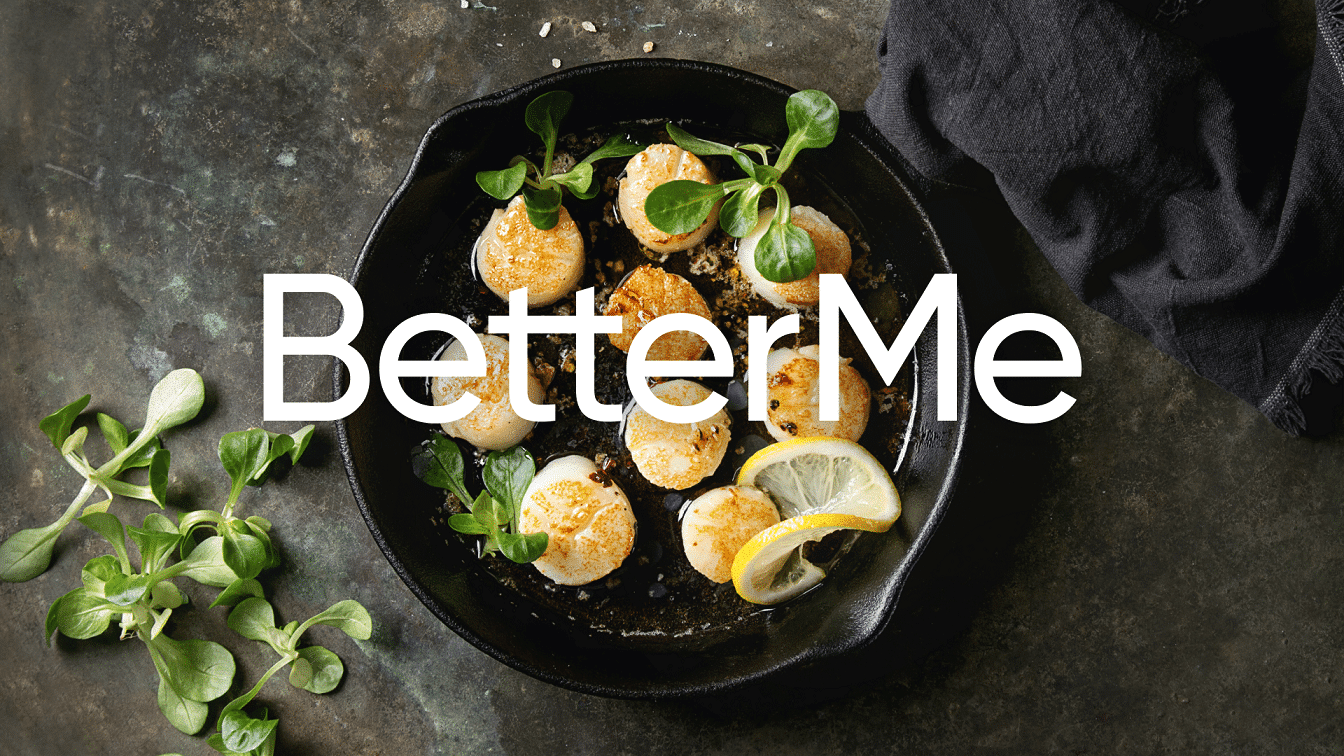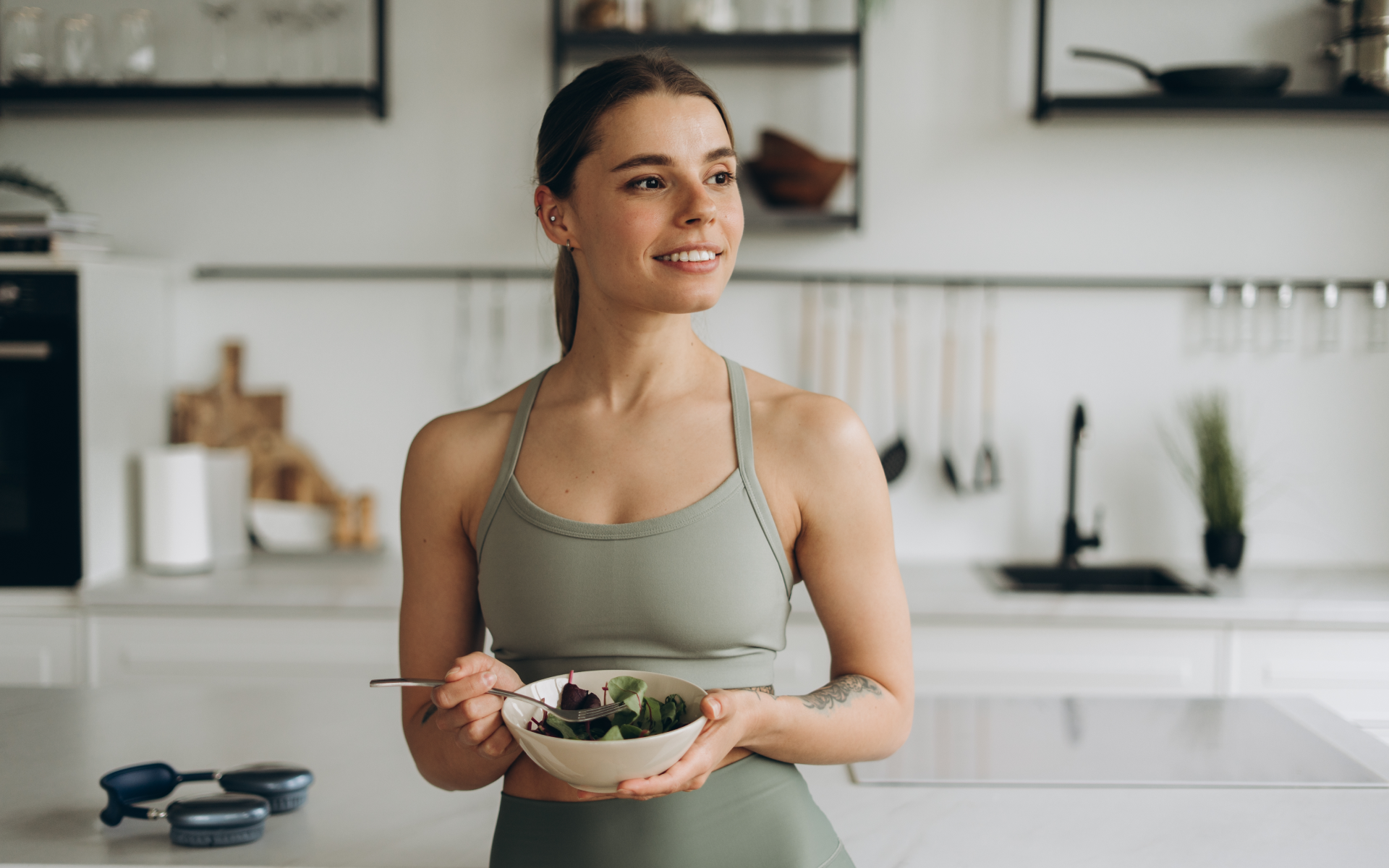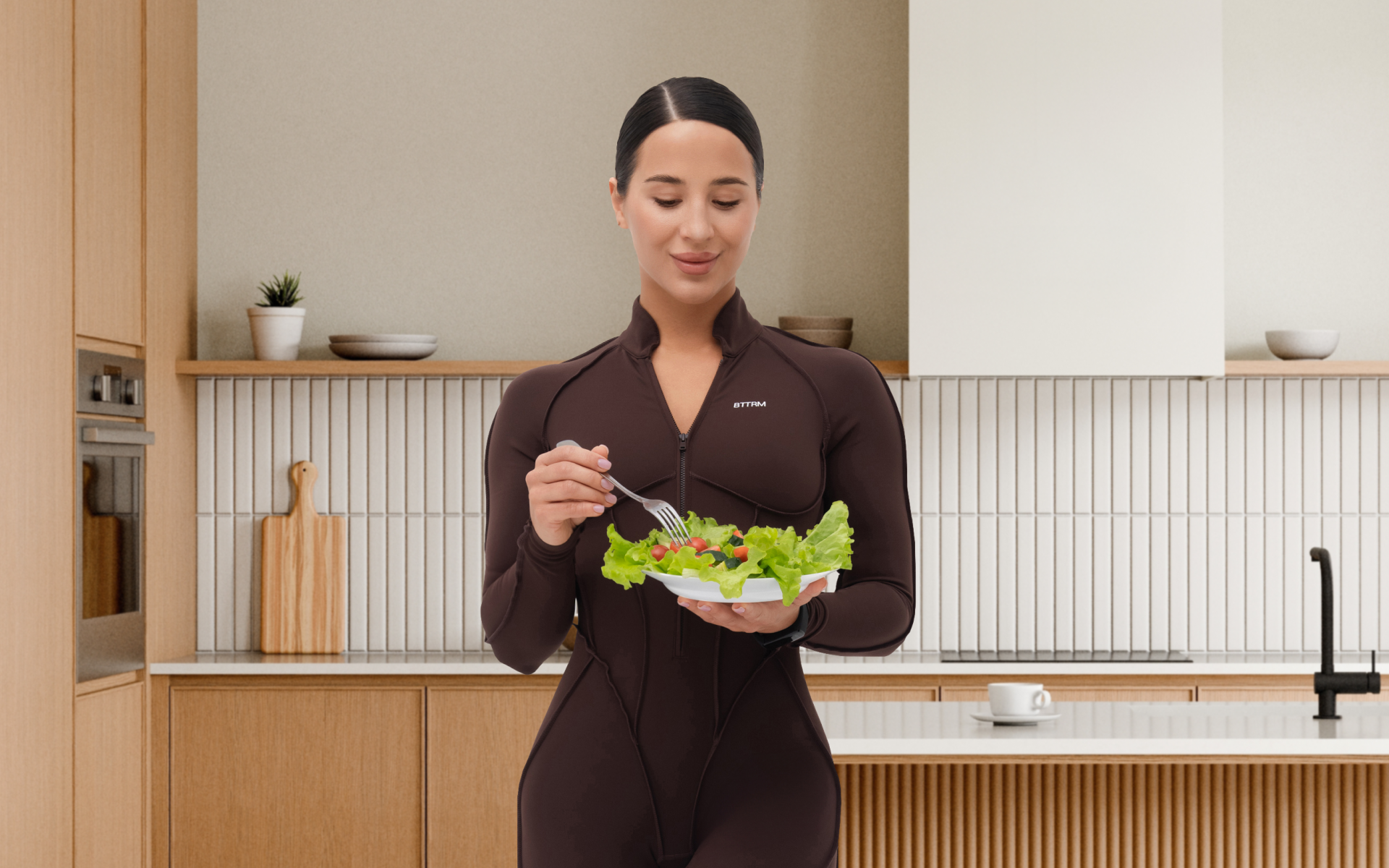A calorie deficit is the holy grail of weight loss. All that fad diets, detox teas, and so-called ‘miracle’ juices try to do is put you in a state where you consume fewer calories than your body burns.
But how well they achieve this goal is questionable. This is mostly because these quick fixes lack the necessary nutrients your body needs to function optimally, leading to fatigue, mood swings, and even weight gain in the long run.
The obvious solution is to choose a meal plan that creates a sustainable calorie deficit without compromising your health. It should be balanced, filling, and enjoyable. And it should be personalized to your lifestyle, preferences, and dietary choices.
Here’s what you need to know to create a calorie-deficit meal plan that truly works.
What Is a Calorie Deficit Meal Planning?
A calorie deficit meal plan is a structured eating plan that ensures you’re eating fewer calories than your body burns. This should result in weight loss over time.
There are many ways to create a calorie deficit, and not all of them involve restricting your food intake.
For example, you can increase your physical activity level, which will require more energy from your body and help you burn more calories. The key is to find the right balance between reducing calorie intake and increasing physical activity (13).
However, it’s almost impossible to sustain a calorie deficit through exercise alone, so a meal plan that focuses on reducing calorie intake is necessary for long-term weight loss success.
Dropping pounds by the dozens without putting yourself through the wringer is everyone’s weight loss pipe dream. But what if we told you that the BetterMe app can make that happen? Keep yourself in prime shape with our fat-blasting workouts, delicious budget-sparing recipes, and body-transforming challenges with our app!
How Many Calories Should You Cut?
Cutting 500-750 calories from your daily consumption is a good place to start. This should promote about a 1-2 pound weight loss per week, which is considered safe and sustainable (6).
But keep in mind that the exact number of calories you need and are able to cut depends on various factors such as your age, gender, height, weight, and activity level.
Let’s explain that in detail, so you truly understand the concept of a calorie deficit.
Your Basal Metabolic Rate (BMR)
Your basal metabolic rate (BMR) is the number of calories your body burns at baseline. It’s the minimum amount of energy required to keep your body functioning, such as breathing, circulating blood, and repairing cells (7).
Your BMR depends on your age, gender, height, and weight. In general, men have a higher BMR than women because they tend to have more muscle mass. Taller and heavier individuals also burn more calories at baseline.
You can use online calculators to estimate your BMR based on these factors. This will give you a ballpark figure of the minimum number of calories your body needs to function.
Your Total Daily Energy Expenditure (TDEE)
Your total daily energy expenditure (TDEE) is the total number of calories your body burns in a day, including all activities – from brushing your teeth to working out.
Your TDEE is calculated by multiplying your BMR with an activity factor that reflects your lifestyle and exercise habits. The more active you are, the higher your TDEE will be.
Creating a calorie deficit is all about finding the right balance between your TDEE and calorie intake. A good starting point is to eat 500-750 calories less than your TDEE, which should result in a safe and sustainable weight loss.
Is a 1200 Calorie Deficit Too Much?
Yes and no, depending on your individual needs. For a lot of people, 1200 calories may be too low and lead to deficiencies and other health issues.
On the other hand, 1200 calories may be an appropriate deficit for some, especially those with a low BMR and a sedentary lifestyle.
There’s truly no one-size-fits-all approach when it comes to calorie deficits. A good understanding of your body’s needs and consulting with a registered dietitian is the best way to determine the right calorie deficit meal plan for weight loss.
We discuss individual needs in more detail in our blog: How To Lose Weight In 3 Weeks
What Foods To Eat In a Calorie Deficit?
A simple meal plan to lose weight will include a good variety and balance of whole, minimally processed foods that are rich in nutrients and low in calories.
Here are some of the best foods to eat on a calorie deficit meal plan for weight loss:
- Vegetables: Broccoli, Spinach, Bell peppers, Brussels sprouts, Carrots, Asparagus, Kale, and many more
- Fruits: Apples, Bananas, Berries, Kiwi, Oranges, Pineapple, Peaches, and more
- Whole Grains: Brown rice, Quinoa, Oats, Whole wheat bread, Barley, Buckwheat, Millet, and others
- Dairy: Skimmed milk, Cottage cheese, Feta cheese, Mozzarella cheese, Greek yogurt, Skimmed ricotta, Low-fat cheddar cheese, etc.
- Nuts and Seeds: Almonds, Walnuts, Chia seeds, Flax seeds, Pumpkin seeds, Sunflower seeds, Peanuts, and more
- Legumes: Black beans, Chickpeas, Lentils, Peas, Kidney beans, Soybeans or tofu, Navy beans, etc.
- Lean Meats: Turkey breast, Chicken breast, Venison, Rabbit, Lean beef, Lean pork, Buffalo, etc.
- Seafood: Shrimp, Mackerel, Sardines, Tuna, Salmon, Halibut, Clams, and others
- Healthy Fats: Avocado, Olive oil, nuts, Chia seeds, Flax seeds, Walnuts, Dark chocolate
- Herbs and Spices: Turmeric, Cinnamon, Ginger, Garlic, Basil, Oregano, Rosemary, and others
- Condiments: Mustard, Salsa, Hot sauce, Vinegar, Soy sauce, Hummus, Guacamole, etc.
As you can see, a calorie deficit meal plan doesn’t have to be bland or restrictive. You can still enjoy a variety of delicious foods while losing weight.
Read more: Maximize Your Fitness with Calorie Deficit Breakfasts
The key is to focus on whole, nutrient-dense foods and limit ultra processed and high-calorie choices. Here are some foods to avoid or limit in your calorie-deficit meal plan:
- Fried foods (French fries, onion rings, fried chicken)
- Processed meats (bacon, hot dogs, deli meat)
- Fast food meals (hamburgers, pizza, tacos)
- Sugary drinks (soda, fruit juices, energy drinks)
- High-fat dairy products (whole milk, cream cheese, ice cream)
- Refined grains (white bread, white rice, pasta)
- High-fat snacks (chips, cookies, pastries)
- Alcohol
- High-sugar foods (candy, chocolate bars, ice cream)
- Frozen meals or packaged convenience foods
- Fried snacks (potato chips, crackers)
- High-fat condiments (mayonnaise, ranch dressing)
- Processed sweetened cereals
- Fried or breaded meats (chicken nuggets, fried chicken)
- Sugary coffee drinks (frappuccinos, mochas)
By avoiding or limiting these food groups and choosing nutrient-dense options instead, you can create a balanced and sustainable calorie deficit meal plan that supports your weight loss goals while also nourishing your body.
Our blog: Calorie Deficit Meals has many ideas on how you can incorporate healthy foods without compromising on taste and variety.
How Do I Create a Calorie Deficit Meal Plan?
Creating a calorie-deficit meal plan for your individual calorie goal requires you to follow these steps:
Identify Your Calorie Needs
Start by calculating your Total Daily Energy Expenditure (TDEE) using an online calculator. This will tell you how many calories your body needs to maintain your current weight, considering your BMR and activity level.
Set Your Calorie Deficit
Subtract 500-750 calories from your TDEE to create a calorie deficit. Remember, the exact amount will depend on your individual weight loss goals and health needs. Always consult with a registered dietitian or nutritionist if you’re unsure.
Choose Nutrient-Dense Foods
Next, make a list of whole, minimally processed foods that are high in nutrients and low in calories. Think colorful fruits and vegetables, lean proteins, whole grains, and healthy fats. These foods will keep you feeling satisfied and energized despite the calorie deficit (2).
Plan Your Meals and Snacks
Divide your daily calorie limit into meals and snacks. Aim for three balanced meals and two snacks each day. Incorporate variety from all food groups to ensure you’re getting a range of nutrients.
Use our list of recommended foods above for inspiration. Consider which meals you can eat and prepare at home, and which ones you may need to eat out or grab on-the-go.
Plan for Leftovers
In your plan, consider serving sizes and how many portions you can get out of each meal. Consider which meals can store well as leftovers or can be repurposed into new dishes. Having planned meals and snacks in advance will also help you stick to your calorie deficit goals.
Meal Prep for Success
Spend some time each week to plan and prepare your meals in advance. This will save you time and help you stick to your calorie deficit meal plan even with a busy schedule.
Track Your Intake
Use food tracking apps or a food diary to log everything you eat and drink. This will help you stay accountable and aware of your daily calorie consumption.
Adjust as Needed
Finally, remember that creating a calorie deficit meal plan is not a one-size-fits-all approach. Monitor your progress, listen to your body, and adjust your calorie intake or activity level as necessary. If you’re not seeing results or if you’re feeling unwell, it might be time to re-evaluate your plan.
Allow the Occasional Indulgence
Don’t forget to allow yourself the occasional treat or indulgence. This will help prevent feelings of deprivation and make your meal plan more sustainable long-term. Just be mindful of portion sizes and frequency.
Want to build an attention-grabbing bubble butt, blast away fat that’s stored in all the wrong places, spring-clean your diet, turn back the clock on your skin, skyrocket your self-confidence and shatter your insecurities? Check out the BetterMe app and set this plan in motion!
What Should I Eat for 1200 Calories a Day?
A simple 1200 calorie meal plan for 7 days (assuming 3 meals and 2 snacks per day) might look like this:
Day 1
- Breakfast (300 calories): Oatmeal with almond milk, topped with chia seeds, banana slices, and a sprinkle of cinnamon. fresh berries and slivered almonds
- Snack (100 calories): 1 small apple with 1 tablespoon of almond butter.
- Lunch (400 calories): Grilled chicken breast with quinoa and roasted vegetables (bell peppers, zucchini, onion) topped with feta cheese.
- Snack (100 calories): Carrots and celery sticks with hummus.
- Dinner (300 calories): Baked salmon with roasted Brussels sprouts and sweet potato wedges.
Day 2
- Breakfast (300 calories): Two boiled eggs, whole grain toast, and avocado slices.
- Snack (100 calories): 1 small orange with a handful of almonds.
- Lunch (400 calories): Turkey and vegetable wrap with whole grain tortilla, hummus, lettuce, tomato, cucumber, and bell pepper slices.
- Snack (100 calories): Roasted edamame beans.
- Dinner (300 calories): Tofu stir-fry with mixed vegetables and brown rice.
Day 3
- Breakfast (300 calories): Greek yogurt with granola, fresh berries, and honey.
- Snack (100 calories): Homemade trail mix with nuts, dried fruit, and dark chocolate chips.
- Lunch (400 calories): Quinoa and black bean salad with mixed greens, tomatoes, avocado, and a lime dressing.
- Snack (100 calories): Sliced cucumber with tzatziki sauce.
- Dinner (300 calories): Grilled chicken breast with roasted asparagus and quinoa.
Day 4
- Breakfast (300 calories): Whole grain toast with avocado and smoked salmon.
- Snack (100 calories): Hummus with whole grain crackers.
- Lunch (400 calories): Vegetable and lentil soup with a side of whole grain bread.
- Snack (100 calories): Fresh fruit salad.
- Dinner (300 calories): Lentil and vegetable curry with brown rice.
Day 5
- Breakfast (300 calories): Vegetable omelet with whole-grain toast.
- Snack (100 calories): Air-popped popcorn sprinkled with nutritional yeast for added flavor and nutrients.
- Lunch (400 calories): Grilled chicken Caesar salad with a light dressing and whole grain croutons.
- Snack (100 calories): Hard-boiled egg with a sprinkle of salt and pepper.
- Dinner (300 calories): Baked white fish with steamed broccoli and quinoa.
Day 6
- Breakfast (300 calories): Whole grain waffles with Greek yogurt and fresh berries.
- Snack (100 calories): Celery sticks with peanut butter.
- Lunch (400 calories): Hummus and vegetable wrap with whole grain tortilla, spinach, cucumber, bell pepper, and carrots.
- Snack (100 calories): Apple slices with cottage cheese.
- Dinner (300 calories): Turkey meatballs with zucchini noodles and marinara sauce.
Day 7
- Breakfast (300 calories): Avocado toast on whole grain bread with a poached egg.
- Snack (100 calories): Edamame and cucumber salad.
- Lunch (400 calories): Whole grain pasta with marinara sauce, vegetables, and grilled chicken.
- Snack (100 calories): Homemade fruit sorbet made with frozen bananas and berries.
- Dinner (300 calories): Grilled vegetables and tofu skewers with quinoa.
Remember to stay hydrated by drinking plenty of water throughout the day, and feel free to swap out any of the recommended meals or snacks for other options that fit within your calorie limit.
Check out our piece on Calorie Deficit Breakfasts for more low-calorie meal ideas.
Note: a 1200-calorie-per-day meal plan may not be suitable for everyone.
Read more: 1,200 Calorie Deficit: Is It a Safe Way To Lose Weight?
What Should I Eat for 1500 Calories a Day?
A simple 1500 calorie meal plan high-protein may look like this:
Day 1:
- Breakfast (220 cal) : Greek yogurt with berries and a drizzle of honey (220 cal).
- Lunch (350 cal): Grilled chicken salad with balsamic vinaigrette.
- Dinner (550 cal): Steamed salmon with quinoa and broccoli.
- Snacks (380 cal): Almonds, 2 boiled eggs, and an apple.
Day 2:
- Breakfast (300 cal): Scrambled eggs with spinach and whole-grain toast.
- Lunch (350 cal): Tuna salad with whole-grain crackers.
- Dinner (550 cal): Lean sirloin steak with sweet potato and green beans.
- Snacks (300 cal): Greek yogurt, a handful of grapes, and carrot sticks with hummus.
Day 3:
- Breakfast (270 cal): Oatmeal with almond milk and a banana.
- Lunch (350 cal): Quinoa salad with mixed vegetables.
- Dinner (500 cal): Grilled chicken stir-fry with brown rice.
- Snacks (380 cal): Cottage cheese, an orange, and mixed nuts.
Day 4:
- Breakfast (300 cal): Avocado toast with a boiled egg.
- Lunch (350 cal): Turkey wrap with whole-grain tortilla and mixed greens.
- Dinner (550 cal): Baked cod with quinoa and asparagus.
- Snacks (300 cal): Greek yogurt, a pear, and raw veggies with hummus.
Day 5:
- Breakfast (300 cal): Smoothie with spinach, berries, protein powder, and almond milk.
- Lunch (350 cal): Lentil soup with a side salad.
- Dinner (550 cal): Turkey meatballs with whole-wheat pasta and marinara sauce.
- Snacks (300 cal): Almonds, a banana, and cottage cheese.
Day 6:
- Breakfast (300 cal): Whole-grain cereal with skim milk and a banana.
- Lunch (350 cal: Chicken salad with whole-grain bread.
- Dinner (550 cal): Baked trout with brown rice and Brussels sprouts.
- Snacks (300 cal): Greek yogurt, an apple, and carrot sticks with hummus.
Day 7:
- Breakfast (300 cal): Protein pancake with a drizzle of honey and berries.
- Lunch (350 cal): Shrimp stir-fry with whole-grain rice.
- Dinner (550 cal): Grilled chicken with sweet potato and steamed veggies.
- Snacks (300 cal): Cottage cheese, a handful of grapes, and mixed nuts.
FAQs
What are The 5 Foods That Burn Belly Fat?
No specific foods can magically make you burn belly fat. However, a variety of nutrient-rich foods as part of a balanced, reduced-calorie diet can help you lose weight and belly fat. Some of these include:
- Almonds: Rich in monounsaturated fats and fiber, almonds can help you feel full and eat less (1).
- Berries: Packed with fiber and antioxidants, berries can aid digestion and fight inflammation (8).
- Lean Proteins: Foods like chicken, turkey, and fish can boost metabolism and reduce appetite (11).
- Leafy Greens: Low in calories and high in fiber, leafy greens like spinach and kale can help reduce fat storage (10).
- Whole Grains: Foods like brown rice, oatmeal, and quinoa are high in fiber and help control blood sugar levels (m5).
Can I Lose Weight on 1500 Calories a Day?
Yes, you can lose weight following a simple 1500-calorie meal plan, provided that it is less than what you burn in a day.
Weight loss happens when you create a calorie deficit, meaning you consume fewer calories than you burn (3). The specific number of calories needed for weight loss varies per individual and depends on factors such as age, sex, weight, and physical activity level.
What Not to Eat on a Calorie Deficit?
When on a calorie deficit, it’s best to avoid foods high in calories but low in nutrients, often known as “empty calories.”
Examples include sugary drinks, fast food, ultra processed foods, and alcohol. These foods can increase your calorie intake without providing the essential nutrients your body needs and may be harmful to your health if eaten in excess (12).
Are 800 Calories a Day Enough?
An 800-calorie diet is a very low-calorie diet that should only be followed under medical supervision.
While such a level may lead to rapid weight loss, it can also have side effects, including nutrient deficiencies, gallstones, and heart problems (4) (9). It’s essential to consult with a healthcare provider before starting any very low-calorie diet.
The Bottom Line
To make a low-calorie meal plan that actually works, it’s important to focus on nutrient-dense foods that provide your body with the necessary vitamins, minerals, and macronutrients. Remember to listen to your body and make adjustments as needed.
DISCLAIMER:
This article is intended for general informational purposes only and does not serve to address individual circumstances. It is not a substitute for professional advice or help and should not be relied on for making any kind of decision-making. Any action taken as a direct or indirect result of the information in this article is entirely at your own risk and is your sole responsibility.
BetterMe, its content staff, and its medical advisors accept no responsibility for inaccuracies, errors, misstatements, inconsistencies, or omissions and specifically disclaim any liability, loss or risk, personal, professional or otherwise, which may be incurred as a consequence, directly or indirectly, of the use and/or application of any content.
You should always seek the advice of your physician or other qualified health provider with any questions you may have regarding a medical condition or your specific situation. Never disregard professional medical advice or delay seeking it because of BetterMe content. If you suspect or think you may have a medical emergency, call your doctor.
SOURCES
- Almonds (Prunus Dulcis Mill. D. A. Webb): A Source of Nutrients and Health-Promoting Compounds (2020, mdpi.com)
- Defining a Healthy Diet: Evidence for the Role of Contemporary Dietary Patterns in Health and Disease (2020, mdpi.com)
- Fat loss depends on energy deficit only, independently of the method for weight loss (2007, pubmed.ncbi.nlm.nih.gov)
- Gallstone formation and weight loss (1993, pubmed.ncbi.nlm.nih.gov)
- Health Benefits of Dietary Whole Grains: An Umbrella Review of Meta-analyses (2022, sciencedirect.com)
- Losing Weight | Healthy Weight, Nutrition, and Physical Activity (2023, cdc.gov)
- Metabolic Consequences of Weight Reduction (2023, ncbi.nlm.nih.gov)
- Recent Studies on Berry Bioactives and Their Health-Promoting Roles (2021, mdpi.com)
- The Potential Dangers of Using Rapid Weight Loss Techniques (2014, journals.lww.com)
- The Relationship between Vegetable Intake and Weight Outcomes: A Systematic Review of Cohort Studies (2018, mdpi.com)
- The role of protein in weight loss and maintenance (2015, sciencedirect.com)
- Ultra-Processed Foods and Health Outcomes: A Narrative Review (2020, mdpi.com)
- Weight-Loss and Maintenance Strategies – Weight Management (2004, ncbi.nlm.nih.gov)
